With hundreds of backpacks available on the market for outdoor activities, it can be freaking and confusing to find the perfect match for your next hiking or backpacking adventure. All you need is a comprehensive buying guide to know that which types of backpacks are suitable for you, and what’s the attributes of such bags. With this guide, we’ve sought to explore the many choices of backpacks that we believe can cater for your travelling needs based on, among others, size, features, and capacity.
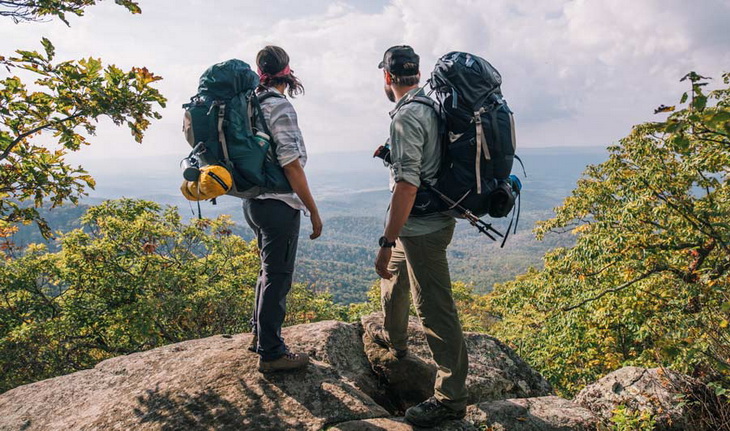
The different kinds of backpacks are distinguished by the intended utilization, design, capacity, duration of use, and the materials. We might have, for example, the day packs, hydration packs, weekend packs, overnight packs, expedition packs and technical packs. Their naming is basically activity-specific. For example, the overnight backpacks can be used to carry your light sleeping bag and the portable camping tent for an overnight sleep out whereas the weekend ones are for weekend outings. We will explore their key differences below. Let’s start with the features that are predominantly important.
What to look for when buying backpacks?
Many people might have varying preferences. But there are common features to look for, particularly with regard to the capacity, material, design, and a proper fit of a bag. These features also differ from one bag to another. For instance, the capacity of a day backpack is normally smaller than that one of an expedition backpack that is designed to carry lots of essentials for multi-day hiking. Obviously it will be needless to stuff a sleeping bag and excess food in a day backpack. Let’s unfold these features below:
Capacity
The capacity of the backpack is an important consideration because it determines the amount of essentials you can store. So, as you decide upon the backpack to buy, think about the type of the hiking gear you want to have. Also think about the number of the days that you’ll take in summit camping. If you are going out for a weekend, perhaps a 50 liter backpack can be suitable to hold all your essentials. These could be sufficient food, clothes, camping tent, and the sleeping bag.
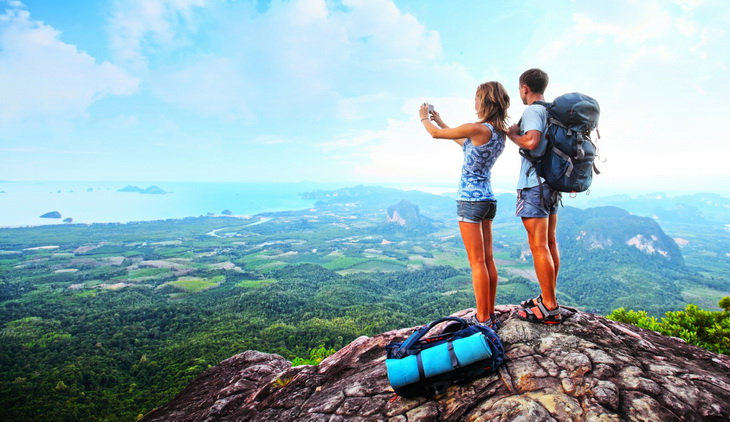
If you’re going out for more than 5 days, an 80 liter backpack could be suitable for your case so that it can hold all your essentials. But take into account the weight on your hip and your feet whenever packing your back. Ultralight backpacking could be helpful in minimizing the hiking gear. This means you should make a checklist of everything you want to carry to your next excursion prior to determining that which backpacks could be the best fit for that.
Material
The material also plays a significant role in a backpack, especially when considering durability and the types of tools to have. For instance, the materials of inferior quality might be torn by some of the sharp tools you pack in the bag. It’s therefore important that you choose well.
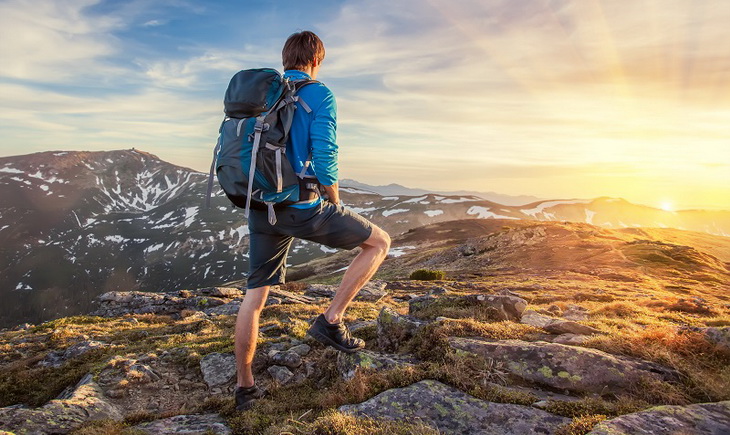
Moreover, inferior quality materials could wear out after several uses, which will then prompt another expensive purchase.
Design
This feature can be the most important one, if you’re in multifunctional backpacks. For instance, the backpacks with extra pockets eliminate the need to have extra bags to hold your camping tent poles. Luckily, some have shoulder pockets or side pockets to accommodate such. There are in fact a lot more tools to save for ease of access. You can’t always take out everything in the bag when you need something stored at the bottom.
The other design attributes go to the difference in frames. Some backpacks, usually the day and hydration backpacks, have no internal or external frames at all. This is probably due to the amount of essentials they hold, which is, by nature, not too bulky or too heavy. They normally have soft foam to cushion a load, and are designed for short distances.
That’s why there was no need to incorporate frames. On the other hand, the large backpacks that are designed for overnight and expedition packs have internal frames. The frames can be plastic or aluminum, or any other metal. Their primary purpose is to distribute the weight of the backpack evenly. You can comfortably have a hiking gear that is over 20 pounds.

The external frames can be found in large multi-day hiking backpacks. These frames help in providing adequate ventilation between the backpack and the spine. Normally, the bag will not ride against your back in summit hiking. But even the other backs with solely the internal frames can have a great deal of ventilation through the mesh panels integrated.
The amount of built-in pockets and divisive compartments also count as the design part of the backpack. Other backpacks come with elasticized side pockets, which can efficiently hold squeeze bottles or tent poles. The hip-belt pockets can also be helpful in holding the small items such as the matches, snacks, multi-chain tools, or anything that can be needed quickly.
Furthermore on pockets, some backpacks come with shovel pockets. These are flaps that are affixed on the front side of the bag with the buckle closure. In these pockets, you can store additional winter apparel or any other lightweight essential such as the snow shovel if you plan to go out in winter. The shovel pockets can be further extended with some front pockets for an additional storage of small items. In actual sense, a backpack may have as many pockets as possible. The choice will then depend on the number of items you plan to carry. It’s a personal preference.

Did we mention anything about the compartments? I guess not yet. The sleeping bag also needs a compartment in the backpack to avoid having the stuff sack for it unless if that stuff sack can fit in the backpack. The compartment can be sewn inside or near the bottom of the bag with zippers to hold the sleeping bag. Also, this feature can be intriguing when considering the design of the backpack. We can mention a lot with the design of the backpack. Remember the straps and the detachable top lids. The adjustable suspensions as well do count a lot to make sure that the backpack fit well.
Proper fit
Now the torso length comes into effect when we refer to the proper fit. The bags are available in varying sizes from extra small to large. You might find out that some are gender-specific. For instance, women backpacks usually come with contoured shape at the waist to accommodate the women shapes. So they will be needless and irrelevant for men to have them.
Other backpacks feature an adjustable suspension to fit a wide range of torsos. Some may have an interchangeable suspension or a fixed suspension. Let’s differentiate them below:
- Adjustable suspension: As already pinpointed above, the backpacks with adjustable suspensions help modify the size so as to fit everyone. There may be a shoulder yoke that can be augmented to fit any body type.
- Fixed suspension: These, as it is self-explanatory, have no adjustability feature. They are, however, stable and solid between the bag and your body. The only problem is that you have to find the exact size that will fit properly. Otherwise be ready for a long trip with no wiggle room.
- Interchangeable suspension: This form of suspension is probably the best when coming to customization. The backpack will allow you to fit, for example, a hip-belt of your choice. Even the shoulder straps can be customized.
So, it is important to take note of various suspensions when purchasing a backpack. The waist size is also worth-notable. Normally, the hip sizes, may range from 20 in to 40 in. The best way to avoid the waist size inconveniences is to look for the backpacks that have interchangeable hip-belts, unless you’re certain about your size before purchasing.
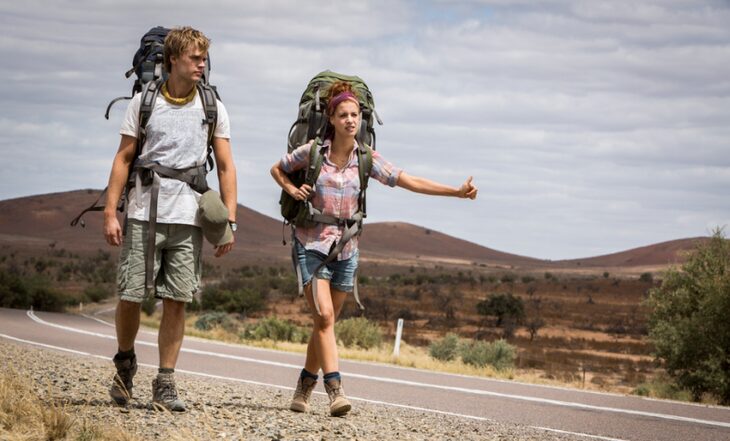
The straps are also worth-considering when you need a proper fit. There are load lifter straps and the sternum straps that are important in adjusting the backpack. For instance, the load lifter straps are attached to the top of the shoulder straps to connect to the top of the bag. They tighten the bag so that the upper portion doesn’t pull away from your body. The sternum straps, on the other side, are the mid-chest straps that attach to the shoulder straps with ease to stabilize the backpack.
You now probably have a broad knowledge about what to look for from now on. Let’s introduce the types of these backpacks below.
Kinds of Backpacks
As reiterated above, the types of these backpacks depend on a number of features such as the intended use, capacity, and a proper fit. Below we will discuss popular models of backpacks. Our list is not meant to be all-inclusive due to the unpredictable launches of new products into the market.
- Weekend Backpacks: These can be the backpacks that are suitable for 1 to 3 nights over the weekend, and they have about 30 liters to 50 liters of capacity that is basically designed for a less-bulky gear. So you need to work out your way to having a light gear. Get rid of excess tools that you do not really need in a short period of hiking. In the weekend backpacks, you can pack essentials such as the following: the small tent, sleeping pad and sleeping bag, a few clothes, food to last for a weekend, first aid kit, water and others depending on your choice.
- Day Backpacks: These are the smallest of them all because for a day you do not need a bulky gear. Things such as the sleeping bag/pad are excluded. These bags can range from 20 to 40 liters. It all depends on the amount of things to carry. But all in all, these bags may carry food, water, and a few clothes in case the weather changes.
- Multi-day Backpacks: Now you need large backpacks with internal frames and with a capacity of between 50 to 80 liters. These bags are popular among people who hike for a week long adventure. You might be exposed to various inclement temperatures, so it is important to take that into account when choosing these backpacks. Conditions such as cold nights and downpours should be accounted for. Normally, you might have the following items: kitchen tools, camping tent, sufficient food for the week, sleeping bag/sleeping pad, extra shoes and clothes, and other necessary items of your preference.
- Expedition backpacks: Now these are the largest of them all. They become helpful when you plan to camp in the wilderness for over 5 days. They can help you carry adequate non-perishable foods that can last even a month. Usually, such backpacks have a capacity of between 70 liters to 95 liters. They are huge enough to carry almost all of the items needed, including the foldable pillows. The following may be packed in these backpacks: extra clothes, cooking utensils, sleeping bag/pad, 4-season tent, camping tent poles, and many more.
We have come to the end of the various backpacks that we have for outdoor enthusiasts.

To make the best out of these backpacks, you have to know how to pack them. Failure to pack nicely and properly may lead to a bulky gear or unnecessary additional bags needed for excess gear. One must know how to pack, for instance, the bags with internal frames, different from the way the bags with external frames would be packed.
How to pack the backpacks efficiently
Here we will guide you to pack your backpack nicely. We focus more on the difference between the internal and external frames in loading the items to make sure that a minimal weight is sustained by the hips and the spine. The small backpacks, ideally the daypacks, need no comprehensive guidelines to load them because only a few items are loaded in a small capacity backpack. Usually a gear that ranges between 10 to 15 pounds is loaded in day backpacks, unlike in the larger backpacks that hold a tremendous amount of items at once.
Loading Internal Frames
- Start with the sleeping bag, wrapped in a waterproof stuff sack, unless the backpack has a waterproof feature. Load the sleeping bag at the bottom because you won’t need to have it along the way until the evening after pitching the tent. Packing it first helps create a stable base for the bag.
- Follow by packing the tent next with poles removed to be inserted in the external pockets of the backpack.
- On the side that is to ride against the spine, align the clothes to avoid sharp tools pressing your spine hard.
- Heavy objects should be stuffed next to the spine to maintain balance on the road
- Load the food items thereafter.
- Excess items should be stuffed in the external pockets that are built-in on the backpacks.
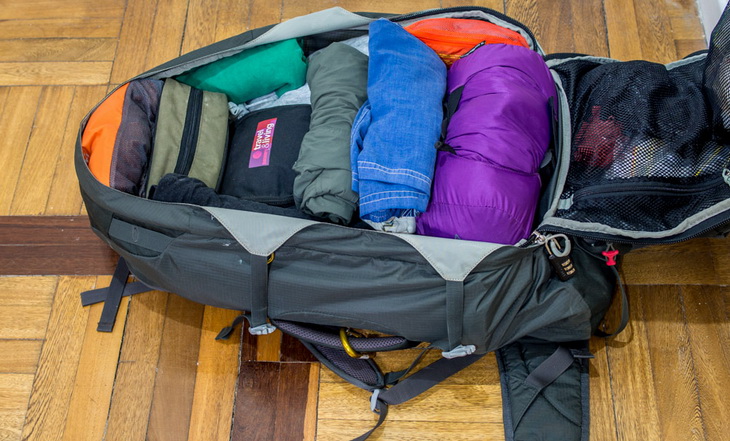
Loading External Frames
- Heavy gear should be stuffed close to the spine and higher up on the frame. These could include the 4-season tent.
- Wrap the sleeping bag in a waterproof sack and put it at the bottom to maintain balance and a stable base
- It is not a requirement to align the clothes against the spine because the external frame normally creates sufficient space between the bag and the body. So it’s highly unlikely that the body may suffer from blisters.
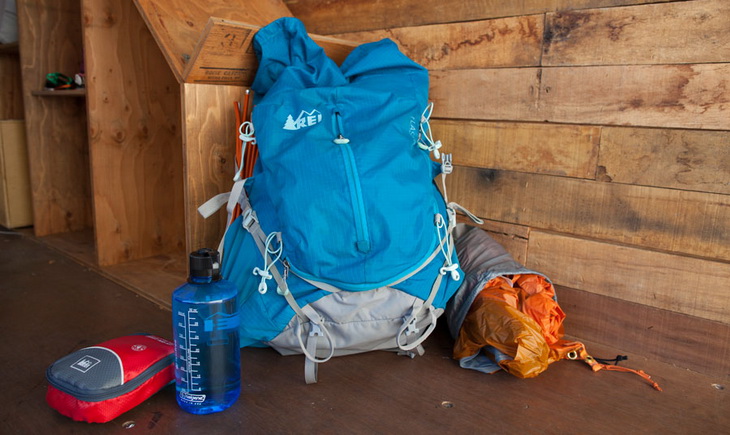
These are just recommendations not the rules of the thumb on how to pack the backpacks. Everyone may derive customized plans to optimize the loading of the bags. If you’re an amateur in these backpacks, rather stick to the expert advice.
Expert Insights and Recommendations
- If you plan on hiking for hundreds of miles, we reckon that you focus more on loading your backpacks because having to wait in the middle of the summit to take the handkerchief or energy bars that are stuffed at the bottom is just a terrible idea. You may be causing tension in your muscles and slowing your pace unnecessarily. With this in mind, please make use of the extra pockets on the outside to store essential items that you will need along the way. The less important ones can be stuffed inside. The pockets are primarily made to store items so you can access them with ease when the need arises.
- If your backpack has no waterproof coating, we reckon that you get one or, otherwise, all the items should be wrapped in a waterproof sack before fitting them in the bag. Usually, water drops penetrate through the zippers and the seams. We reckon that you seam seal your backpack to prevent any seepage of the water into the bag to damage your items. Having a rain-cover for the bag is also a good precautionary measure.
- When storing your food in your bag, only stuff the food that can be preserved under hot temperatures because squeezing items will inescapably create heat. As a result, the food might deteriorate. It would be better if the bag has sufficient ventilation. We reckon that you look for the backpacks that have mesh panels for breathability purposes. It is also important to immediately unpack the bag the minute you reach your destination.
- If you’re set to purchase a backpack online, go for the ones with interchangeable or adjustable suspensions. Some online displayed products look different to actual sizes. So to stay on the safe side with a proper fit, avoid fixed suspensions. If buying in a local store, then it shouldn’t be that of a problem.
- The larger the backpack, the more the price tag. So be advised to cut as many pounds as possible. Do not stuff unnecessary items. If you are going to hike next to the village, for example, do not stuff excess food from home. Rather, take some money to purchase when you reach your destination.
- It is also important to cut the costs when purchasing these backpacks. The higher, the number of features, the higher the price. Go through a range of manufacturers to compare the prices. It is also noteworthy not to compromise the quality because of the price. Take your time and read the customer reviews on the online marketplaces.
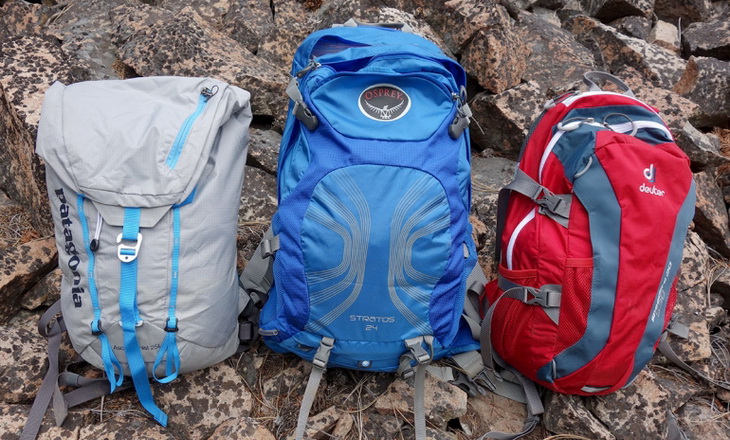
Wrapping Up!
With the information we have given you, we believe that you are well-rounded to choose the best backpack based on capacity, design, proper fit and other important features. The difference between the backpacks is primarily created by their intended use. If you recall the names from above, they are named based on the intended use. For example, day backpacks and weekend backpacks. So, you have to take that into account when buying these bags that, what kind of hiking to take and for how long you will be camping in the wilderness. Plan your food accordingly, especially if you are devoted to an ultralight hiking.
In our endeavor to show you the difference in capacity of the backpacks, we’ve mentioned the estimated liters for each type of a backpack. We actually have mentioned the range that can be suitable for a certain bag. The bottom line is that, your intended use prevails and supersedes anyone’s recommendations. We wish you all the best in your shopping endeavor.










